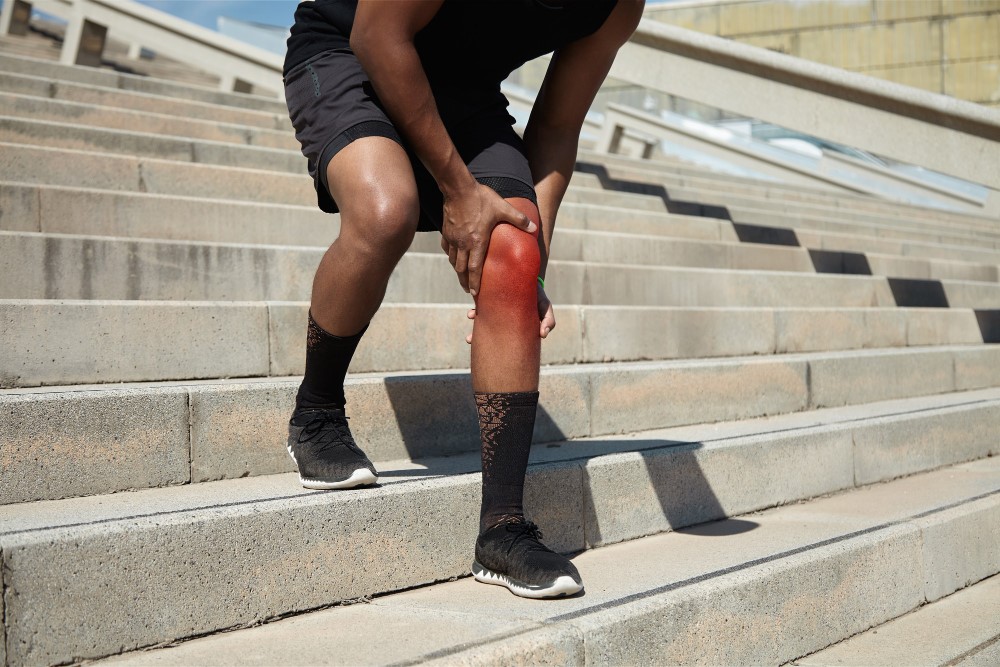Osteochondritis dissecans sounds complicated, but it’s actually a condition affecting joints. Imagine your knee or elbow, where bones meet and move smoothly. Osteochondritis dissecans happens when a small piece of bone and cartilage starts to lose blood supply and loosens from the end of a bone. This can lead to pain and swelling. It might feel like something’s catching or locking in your joint, which is as uncomfortable as it sounds.
Why should you care about osteochondritis dissecans? Well, our joints are used every day, whether for playing sports, jumping off a bus, or even waving to a friend. Healthy joints mean less pain and more freedom to do what we love without limitation. Understanding this condition is important because early recognition and osteochondritis dissecans treatment can prevent long-term joint issues and keep you moving freely.
In this blog, we’ll break down osteochondritis dissecans causes, symptoms, diagnosis, and treatment options. We aim to provide clear steps and guidance, especially for young athletes at risk. You’ll learn how to spot warning signs early and what to expect if you or someone you care about shows symptoms. Easily understood information empowers you to make informed health decisions. Let’s dive in and arm you with the knowledge that can help keep joints healthy and happy.
Exploring Causes and Symptoms of Osteochondritis Dissecans
The causes of osteochondritis dissecans can vary, but repetitive stress is a big player, especially in young bodies. Picture a teenager who plays basketball every day; the constant pressure on their knees can spark this condition. Sometimes, a specific knee injury can start things off by disrupting the blood flow to the area. Growing bones are also more susceptible, making osteochondritis dissecans more common during adolescence.
Certain groups are more at risk. Young athletes are particularly vulnerable due to the stress placed on their growing joints. However, it isn’t exclusive to athletes; active kids and even adults can be affected. There’s a common myth that osteochondrosis dissecans is largely hereditary or tied to gender, but lifestyle and activity level play bigger roles.
Recognizing osteochondritis dissecans symptoms is key. Symptoms often include joint pain, swelling, and a limited range of motion. Sometimes, you might feel a joint is stuck or locks up during movement. It’s super important to notice these signs early. Detecting symptoms sooner means starting osteochondritis dissecans treatment earlier, which can seriously improve outcomes and help avoid surgery.
Untangling Diagnosis and Treatment Options
Getting a proper osteochondritis dissecans diagnosis involves visiting healthcare professionals. Usually, it starts with a physical exam where a doctor checks for swollen, sore spots. X-rays and MRIs are common tools. They help doctors see inside the joint to confirm the presence of osteochondrosis dissecans and understand its extent. These tests reassure you that nothing’s missed, and you’re on the right track.
Osteochondritis dissecans treatment varies. For non-severe cases, resting the joint and physical therapy can help. These treatments work well when detected early. For more serious issues, surgery might be needed to remove or repair the affected bone and cartilage. This sounds scarier than it often is, as these procedures show good success rates, especially when done promptly.
Proper treatment and adherence are crucial. While healing can take time, it allows for a full return to normal activities with minimal pain. Neglecting treatment, however, can lead to bigger problems down the line, like joint instability and arthritis, impacts that can limit mobility. So, taking the right steps can mean a great recovery and a return to an active lifestyle.
Preventive Measures and Future Outlook
Preventing osteochondritis dissecans focuses on minimizing joint stress, especially for young athletes. Simple practices such as wearing proper footwear, doing regular strength training, and ensuring adequate rest between activities help keep joints healthy. For parents and coaches, being keen observers of children’s joint pain and swelling is vital to catch early signs.
Exciting new research continues to advance our understanding and treatment of osteochondrosis dissecans. Improved imaging techniques and minimally invasive surgical methods bring hope to those affected and guide future practices.
In conclusion, if you have joint pain or mobility concerns, consulting with healthcare professionals is crucial. They provide guidance tailored to individual needs, ensuring the best outcomes. Being proactive about joint health can keep you moving and doing what you love, pain-free.


